Moving a safe upstairs presents a unique set of challenges due to its considerable weight and size. The process requires careful planning and execution to avoid injury and damage to your property.

Understanding how to get a safe upstairs involves more than just brute strength; it necessitates strategic planning and a clear understanding of the safest methods to ensure a smooth transition. Safety precautions are paramount, as neglecting these can lead to serious injuries or property damage.
This article provides a comprehensive guide on how to get a safe upstairs, offering detailed methods and valuable tips to ensure a successful move.
Key topics include assessing the situation, gathering necessary equipment, planning the route, using a dolly or hand truck, using manual lifting methods, and when considering professional moving services.
Each section emphasizes safety and efficiency, allowing you to confidently approach this daunting task.
Preparing for the Move
Assessing the Situation
Before attempting to move a safe upstairs, it is crucial to evaluate the weight and size of the safe. This information is typically available in the safe’s manual or can be found on the manufacturer’s website.
Knowing the exact weight will help determine the number of people required and the type of equipment needed. Additionally, it’s necessary to measure doorways, staircases, and hallways to ensure the safe can pass through without any issues.
Make sure to account for any tight turns or low ceilings that could complicate the move. Precise measurements will prevent surprises and ensure a smoother operation.
Gathering Necessary Equipment and Help
To safely and efficiently move a safe upstairs, you’ll need specific equipment, including a sturdy dolly, heavy-duty straps, padding to protect surfaces, and gloves to ensure a firm grip.
It’s also wise to have protective covers or blankets to safeguard walls and floors. Enlisting help is imperative; consider asking friends and family or hiring professionals.
The more hands you have, the easier and safer the moving process will be. Remember to choose helpers capable of handling heavy loads and be aware of the safety precautions that must be followed.
Planning the Route
Mapping Out the Path
Identifying the safest and most direct route to the final location is crucial for a successful move.
Begin by walking through the entire path from the starting point to the destination, noting any potential obstacles such as narrow hallways, low ceilings, or tight corners.
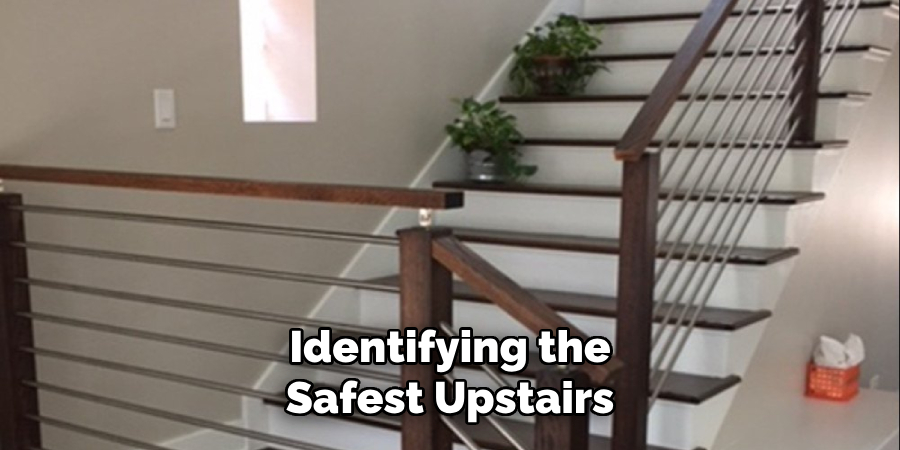
Once identified, these obstacles should be removed or mitigated to ensure a clear path. Additionally, make sure to secure children away from the moving area to prevent accidents and distractions.
This initial walkthrough helps visualize the route and anticipate any challenges that could arise, preparing you for a smoother moving process.
Preparing the Stairs
Before moving a safe upstairs, it’s essential to check the stairs for both stability and strength. Inspect each step to ensure they can withstand the weight of the safe and the movers.
If you have any doubts about the stair’s integrity, make necessary repairs before attempting the move. Use protective coverings such as thick blankets, cardboard, or even specialized stair protection mats to prevent damage to both the stairs and the safe.
These coverings will safeguard against scratches, dents, and other damage to the stairs and the safe. Taking these precautions will contribute significantly to a secure and smooth transition to the safe upstairs.
How to Get a Safe Upstairs: Using a Dolly or Hand Truck
Securing the Safe to the Dolly
Securing the safe to a dolly or hand truck is critical in ensuring a safe and effective move. Begin by properly positioning the safe on the dolly. It’s important to center the safe’s weight over the dolly’s axle to maintain balance.
Make sure the safe is upright and positioned in a manner that distributes weight evenly. This balanced positioning is crucial for stability while moving.
Once the safe is correctly positioned, use heavy-duty straps to secure it tightly to the dolly. Fasten the straps around the safe at multiple points, ensuring they are snug and without any slack.
Double-check the tightness of each strap by giving them a firm pull; this will confirm that the safe is firmly in place and will not shift during transport. This step is essential for maintaining control and minimizing the risk of accidents as you navigate the stairs.
Navigating the Stairs with a Dolly
Moving a safe up the stairs with a dolly requires careful technique and strong teamwork. Start by approaching the first step slowly, ensuring all helpers know the plan.
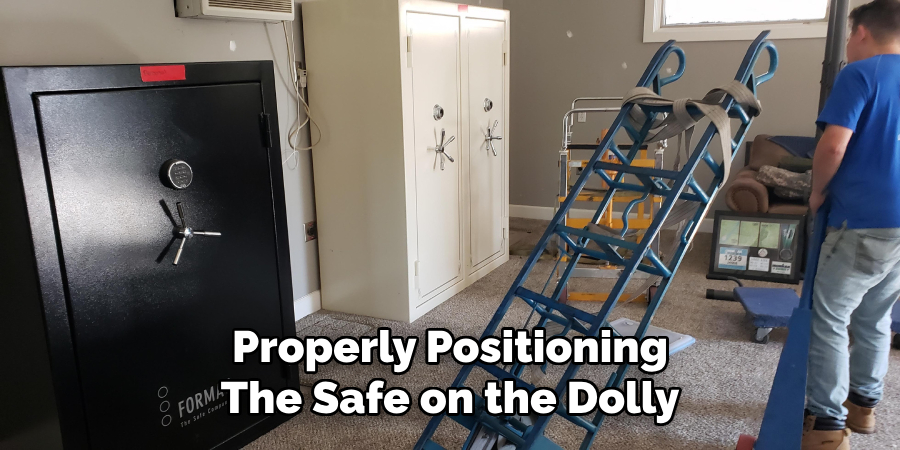
One person should be positioned at the bottom of the stairs, guiding the dolly upwards, while another stands at the top, ready to assist and stabilize. Communication is key throughout this process; clear and consistent directions will help coordinate movements and ensure safety.
To move the dolly up the stairs, gently tip it back and lift the front wheels onto the first step while the person at the bottom lifts and pushes. The helper at the top should pull and guide the dolly, monitoring its balance.
Take each step one at a time, maintaining a steady pace. This method ensures that the weight is distributed appropriately and no sudden movements cause loss of control or injury.
Using Ramps or Boards
Using ramps or boards can simplify moving a safe upstairs by creating a smoother path. Place sturdy ramps or strong wooden boards over the stairs, ensuring they are securely positioned and can support the combined weight of the safe and dolly.
This path will mitigate the effort required to lift the dolly up each step, easing the strain on the movers.
With the ramps or boards in place, slowly push or pull the dolly up the ramp. Engage in a coordinated effort where one person pulls from the top, and another pushes from the bottom.
This synchronized movement minimizes the risk of accidents and ensures the safety and dolly remain balanced. Take breaks as needed to avoid fatigue, impairing judgment, and increasing the risk of mishaps.
The use of ramps or boards not only streamlines the moving process but also contributes significantly to maintaining the safety of both the movers and the property.
How to Get a Safe Upstairs: Manual Lifting Methods
Using Moving Straps
Moving straps can provide essential support and safety when moving a safe upstairs manually. Begin by positioning them under the safe, ensuring they are centered to evenly distribute the weight.
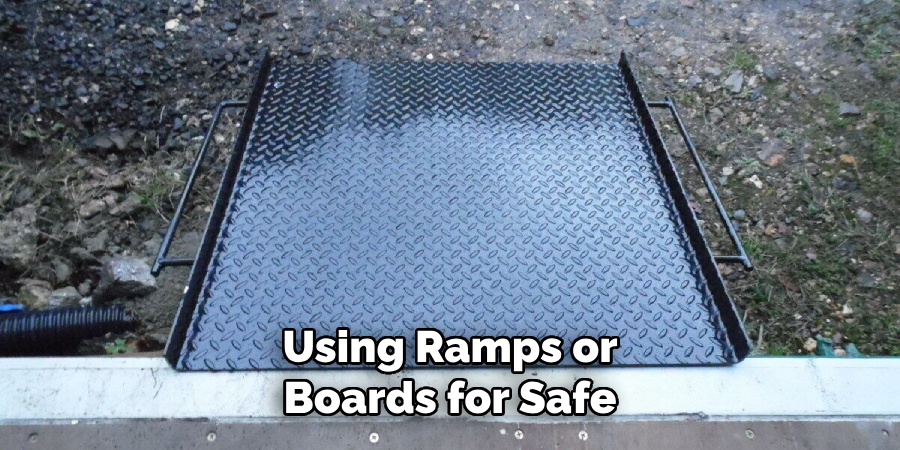
Have the movers slide the straps under the safe from front to back, adjusting as necessary for a secure fit. Proper lifting techniques are crucial to prevent injury; people should lift with their legs rather than their back to minimize strain.
As the team lifts, they should ensure that the safe remains steady and that weight is properly distributed among all movers. Moving straps help balance the load, reducing the effort required and enhancing coordination during the lifting process.
Team Lifting Strategies
Effective team lifting requires careful planning and coordination. Assign specific roles to each team member, clearly outlining who will lift from which position, who will guide, and who will provide additional support if needed
It is essential to establish clear communication among team members, using simple and consistent commands to synchronize movements and ensure everyone is on the same page.
Regular breaks are also important to prevent fatigue, which can lead to mishaps and injuries. By maintaining a steady pace and focusing on coordination, team lifting becomes a safer and more efficient method for moving a safe upstairs.
Professional Moving Services
Benefits of Hiring Professional Movers for Heavy Safes
Hiring professional movers to transport heavy safes has numerous advantages. These experts possess the necessary experience, skills, and equipment to handle difficult moves safely and efficiently.
They can easily navigate tight spaces, stairs, and other challenging obstacles, significantly reducing the risk of damage to your property and personal injury.
What to Expect from Professional Moving Services
Professional moving services offer comprehensive solutions tailored to your specific needs. They will conduct an initial assessment to plan the safest and most effective moving strategy.
Services typically include disassembling and reassembling furniture if required, using specialized equipment like dollies and ramps, and securing transportation. Additionally, reputable companies offer insurance coverage for added peace of mind.
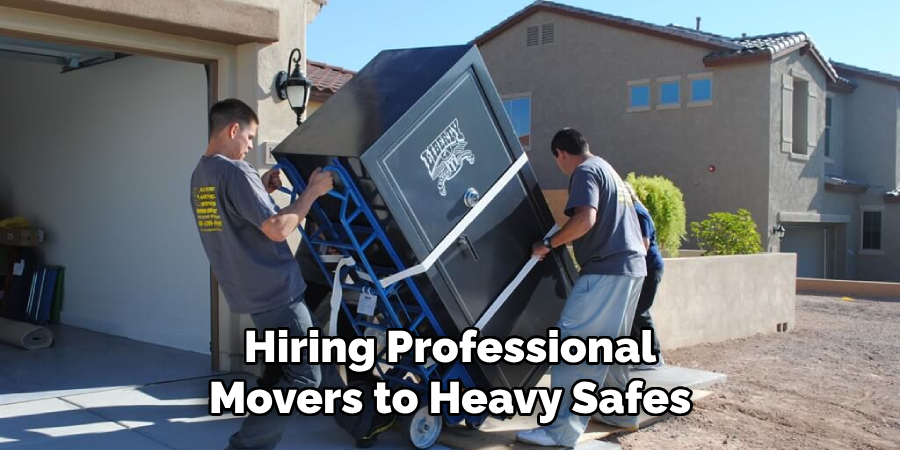
How to Choose a Reputable Moving Company
When selecting a reputable moving company, start by researching potential candidates. Look for companies with positive customer reviews and high ratings from trusted sources like the Better Business Bureau.
Verify the company’s licensing and insurance status to ensure they meet all regulatory requirements. Request detailed quotes and compare services and prices before making your decision.
Don’t hesitate to ask for references or conduct interviews to gauge their professionalism and expertise.
Safety Precautions
Personal Safety
Ensuring personal safety is paramount when moving a heavy safe. Always wear appropriate safety gear, such as gloves and sturdy shoes, to protect against potential injuries and provide better grip and stability.
Gloves can prevent blisters and enhance grip, while sturdy shoes provide support and prevent slips. Moreover, lifting with your legs rather than your back is crucial to prevent strains and serious back injuries.
This technique involves bending your knees and keeping your back straight, allowing your leg muscles to bear the weight.
Clear communication and coordination among team members can also prevent mishaps and ensure the safe handling of the heavy load.
Protecting Property
Protecting your property during the moving process is essential to avoid causing damage to walls and floors. Use padding and protective covers to safeguard surfaces from scratches and dents.
Furniture pads, blankets, and bubble wrap can be effectively employed to cushion any accidental impacts. Moving slowly and carefully is another critical measure to prevent accidents.
By taking your time and planning each step meticulously, you can control the motion of the safe, reducing the risk of colliding with walls or other objects. Moreover, always ensure that the path is clear of obstacles to facilitate smoother and safer movement.
Troubleshooting Common Issues
Dealing with Narrow Staircases or Tight Corners
Narrow staircases or tight corners can present significant challenges when moving a safe. To navigate these spaces, measure all dimensions beforehand to ensure there’s adequate clearance.
Disassemble the staircase railing if necessary and consider using a stair-climbing dolly designed to handle tight spots. Angling and moving the safe diagonally can also help fit through narrower passages.
Addressing Balance Issues and Preventing the Safe from Tipping
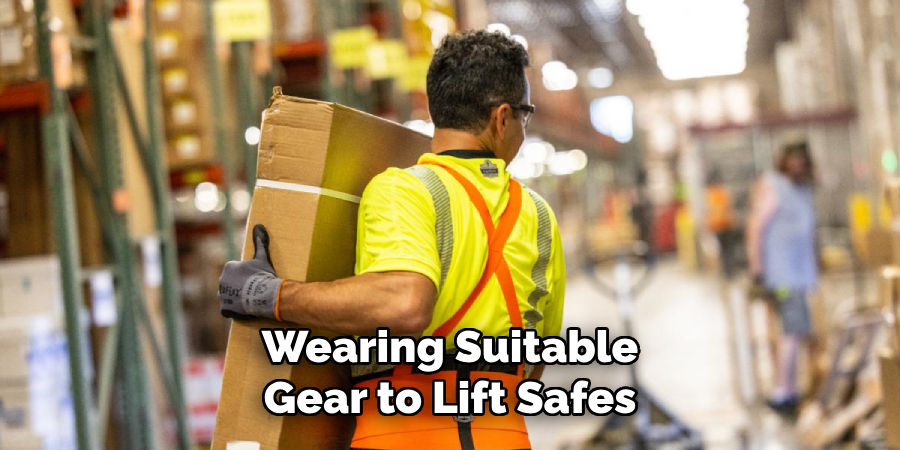
Maintaining balance is critical to prevent the safe from tipping, which could result in injury or damage. Ensure the load is evenly distributed on the dolly and double-check the positioning of moving straps.
Taking slow, controlled steps and using stabilization bars can significantly reduce the risk of tipping. If the safe starts tiling, communicate clearly to coordinate a halt and reposition safely.
Solutions for Moving Safes with Unique Shapes or Sizes
Safes with unusual shapes or sizes require special attention. Custom dollies and cradles can be used to better accommodate the safe’s specific dimensions. Additionally, padding can protect irregular edges and corners.
For particularly cumbersome safes, consulting with a professional mover to explore customized solutions and specialized equipment is often the safest and most efficient approach.
Conclusion
In conclusion, moving a safe upstairs requires meticulous planning, a clear understanding of potential challenges, and strict adherence to safety procedures.
Key steps include assembling an effective team with assigned roles, maintaining clear communication to synchronize movements, and utilizing proper lifting techniques to prevent injuries.
Prioritizing personal safety, such as wearing suitable gear and lifting with your legs, is crucial to avoid accidents. Additionally, protecting your property using padding and ensuring clear pathways are essential measures.
Troubleshooting common issues, such as dealing with narrow staircases or unique safe shapes, can often be managed with specialized equipment and techniques.
Remember, when in doubt about how to get a safe upstairs, professional moving services can offer the expertise and resources necessary to handle complex moves safely and efficiently. Prioritize safety and planning to ensure a successful and damage-free relocation of your safe.
About
Safety Fic is a distinguished figure in the world of Diy design, with a decade of expertise creating innovative and sustainable Diy solutions. His professional focus lies in merging traditional craftsmanship with modern manufacturing techniques, fostering designs that are both practical and environmentally conscious. As the author of diy, Safety Fic delves into the art and science of Safety Fic-making, inspiring artisans and industry professionals alike.
Education RMIT University
(Melbourne, Australia) Associate Degree in Design (Safety Fic) Focus on sustainable design, industry-driven projects, and practical craftsmanship. Gained hands-on experience with traditional and digital manufacturing tools, such as CAD and CNC software.
Nottingham Trent University
(United Kingdom) Bachelor’s in diyfastly.com and Product Design (Honors) Specialized in product design with a focus on blending creativity with production techniques. Participated in industry projects, working with companies like John Lewis and Vitsoe to gain real-world insights.
Publications and Impact
In diy, Safety Fic his insights on indoor design processes, materials, and strategies for efficient production. His writing bridges the gap between artisan knowledge and modern industry needs, making it a must-read for both budding designers and seasoned professionals.
